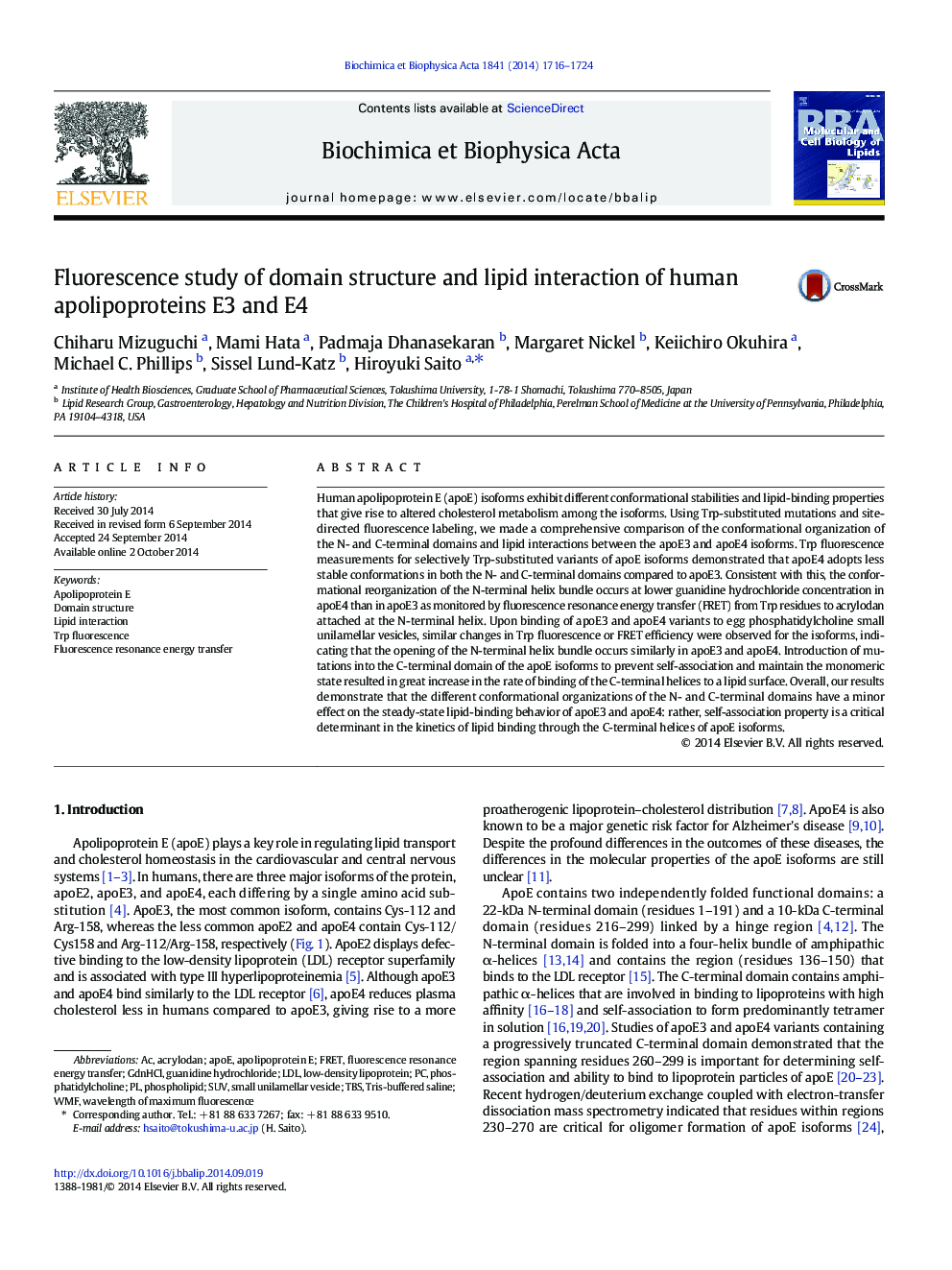| کد مقاله | کد نشریه | سال انتشار | مقاله انگلیسی | نسخه تمام متن |
|---|---|---|---|---|
| 1949151 | 1537723 | 2014 | 9 صفحه PDF | دانلود رایگان |

• Human apoE isoforms exhibit different stabilities and lipid-binding properties.
• ApoE4 adopts less stable conformations in the N- and C-terminal domains than apoE3.
• Conformational difference has a minor effect on lipid binding of apoE isoforms.
• Self-association property is critical to the lipid-binding kinetics of apoE isoforms.
Human apolipoprotein E (apoE) isoforms exhibit different conformational stabilities and lipid-binding properties that give rise to altered cholesterol metabolism among the isoforms. Using Trp-substituted mutations and site-directed fluorescence labeling, we made a comprehensive comparison of the conformational organization of the N- and C-terminal domains and lipid interactions between the apoE3 and apoE4 isoforms. Trp fluorescence measurements for selectively Trp-substituted variants of apoE isoforms demonstrated that apoE4 adopts less stable conformations in both the N- and C-terminal domains compared to apoE3. Consistent with this, the conformational reorganization of the N-terminal helix bundle occurs at lower guanidine hydrochloride concentration in apoE4 than in apoE3 as monitored by fluorescence resonance energy transfer (FRET) from Trp residues to acrylodan attached at the N-terminal helix. Upon binding of apoE3 and apoE4 variants to egg phosphatidylcholine small unilamellar vesicles, similar changes in Trp fluorescence or FRET efficiency were observed for the isoforms, indicating that the opening of the N-terminal helix bundle occurs similarly in apoE3 and apoE4. Introduction of mutations into the C-terminal domain of the apoE isoforms to prevent self-association and maintain the monomeric state resulted in great increase in the rate of binding of the C-terminal helices to a lipid surface. Overall, our results demonstrate that the different conformational organizations of the N- and C-terminal domains have a minor effect on the steady-state lipid-binding behavior of apoE3 and apoE4: rather, self-association property is a critical determinant in the kinetics of lipid binding through the C-terminal helices of apoE isoforms.
Figure optionsDownload high-quality image (125 K)Download as PowerPoint slide
Journal: Biochimica et Biophysica Acta (BBA) - Molecular and Cell Biology of Lipids - Volume 1841, Issue 12, December 2014, Pages 1716–1724